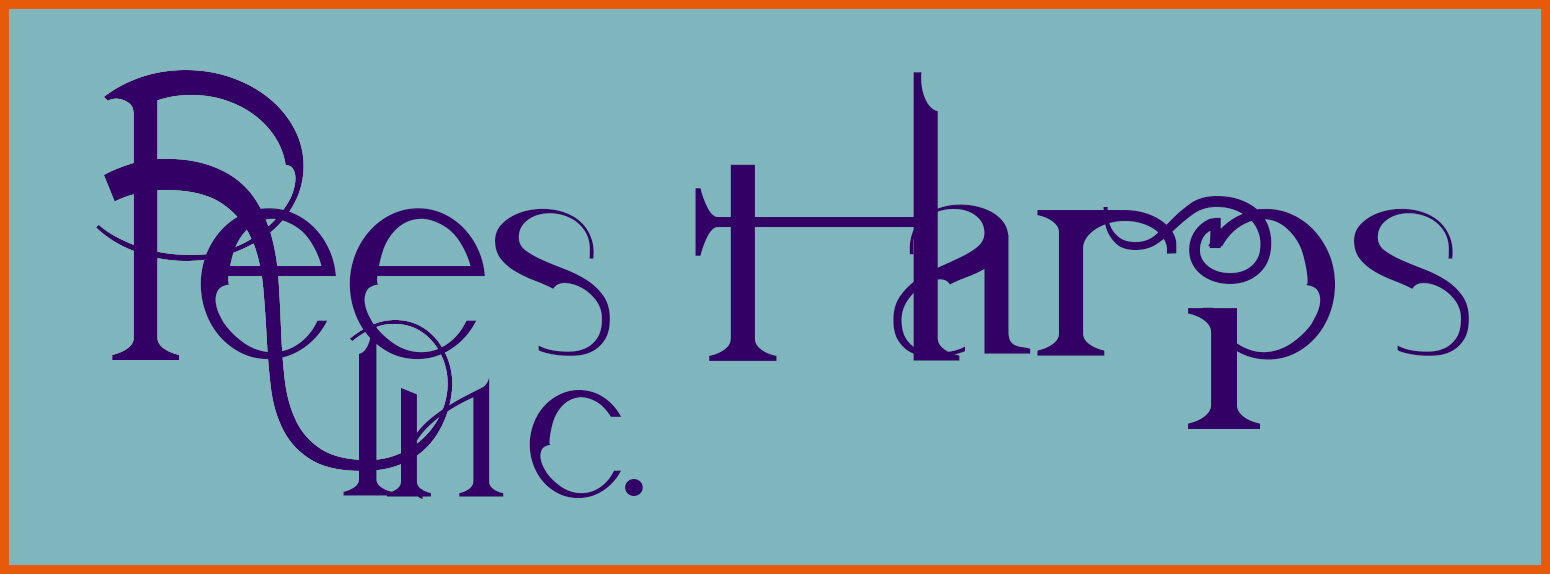String Spacing and String Tension
There are many misunderstandings and myths surrounding harp string spacing and string tension. Here we try to explain the parameters and clear up any confusion.
You can see the graduated string spacing here as the strings transition from nylon/nylon wrapped strings, which have more mass and need more room to vibrate, to the monofilament tempered nylon strings.
String Spacing
According to Webster's digital dictionary, a standard is defined as: something set up and established by authority as a rule for the measure of quantity, weight, extent, value, or quality. According to the authority and custom of lutherie, there is a firmly established standard for violin string length and tension. Variants exist but there is a written, well known standard that is acknowledged by all lutheries world-wide. The same is true of guitars. Harps have no such standard. What is mistakenly referred to as "standard" is generally the Lyon and Healy "concert spacing”.
String spacing in any stringed instrument is driven by two factors: the mechanical space required for a given string vibrate freely and the ergonomics of the human player. The minimum amount of mechanical space required is a mathematically calculable formula and, with this in mind, harps are designed around specific string types, lengths and tension. This is why it is dangerous to change string types or diameters without checking with the lutherie. Strings which drive the harp beyond the design envelope both destroy the harp and, generally, negate the warranty.
"Concert spacing" is not a design parameter necessitated by the physics of the instrument itself. Harp lutheries which use even spacing are relying on the piano's concept of even spacing regardless of octave. Ergonomically, the piano works well with even spacing because the person playing is using a palms down, wrists rotated, ball of the finger action. Since human hands and fingers fall within a general size range, the minimum width of keys is basically dictated to piano builders.
Harps are not an equally obvious choice for even spacing. Both harpers and harpists play with wrists straight and palms in their natural inward facing position enabling the fingers to attack the strings utilizing a smaller surface: the finger tip, edge or nail. Since harps do not have the large attack surface requirements of the piano, the shorter the distance a finger has to move, the faster it can be operated. The advantage of reduced finger travel distance applies down to 12.5mm. Spacing below 12.5mm is too narrow for the size of the average finger and the spacing itself becomes an error agent.
Harps which are built to best accommodate the human hand have graduated spacing. Graduated spacing means that above the 12.5mm threshold, strings are generally spaced as close together as mechanically possible. This results in shorter strings being spaced closer together than longer strings. Beyond ease of play, the other major advantage of graduated spacing over even spacing is that the harmonic arch does not have to be as long. A shorter harmonic arch decreases the overall depth of the harp. This eases shoulder strain by minimizing the amount of forced reach and the accompanying shoulder rotation. A shorter harmonic arch also generally means a comparatively smaller, lighter instrument. In these days of carpal tunnel syndrome and common back ailments, ergonomic design is increasingly important. Like most lever harp lutheries, we, at Rees, have always used graduated spacing on our harps.
On lever harps the bass strings exert enough force on the soundboard that it actually "bellys-up" a bit. This is true even in a low tension harp like the Rees Mariposa shown above.
String Tension
String tension is a subject around which there is considerable misinformation. Among some the idea exists that lower tension harps are inferior. Others positively associate low tension with a specific type of string and harp voicing. Overall, the misunderstandings about string tension generally fall into two areas, design/voice decisions and technique.
In any given harp plan, the luthier first has in his/her "mind's ear" the voice the instrument is meant to achieve, the type of player for whom the harp is intended and, possibly, the price point at which the harp will sell. Decisions made about string tension are intimately tied to these parameters. While string tension is one of the aspects around which a new harp is designed, voicing qualities like balance, dynamic range and volume are also essential elements. Because of the physics of the harp, a change in one of these elements changes all of them and emphasizing one generally comes at the cost of another. For instance, one popular brand of light tension harp has a lovely, bright voice but virtually no dynamic range and not much volume. For players, then, selecting a harp becomes a matter of selecting between priorities.
The second misunderstanding related to string tension has to do with technique. Like guitars, harps with different string tensions allow for distinction in technique. Every harp is not for every player. A sophisticated harp customer evaluates a harp within the bounds of the technique(s) appropriate to that individual instrument and intended use.
The most important thing to know about string tension is that there is not a “right” tension. Players should and must feel free to choose the harp which feels right to them.

